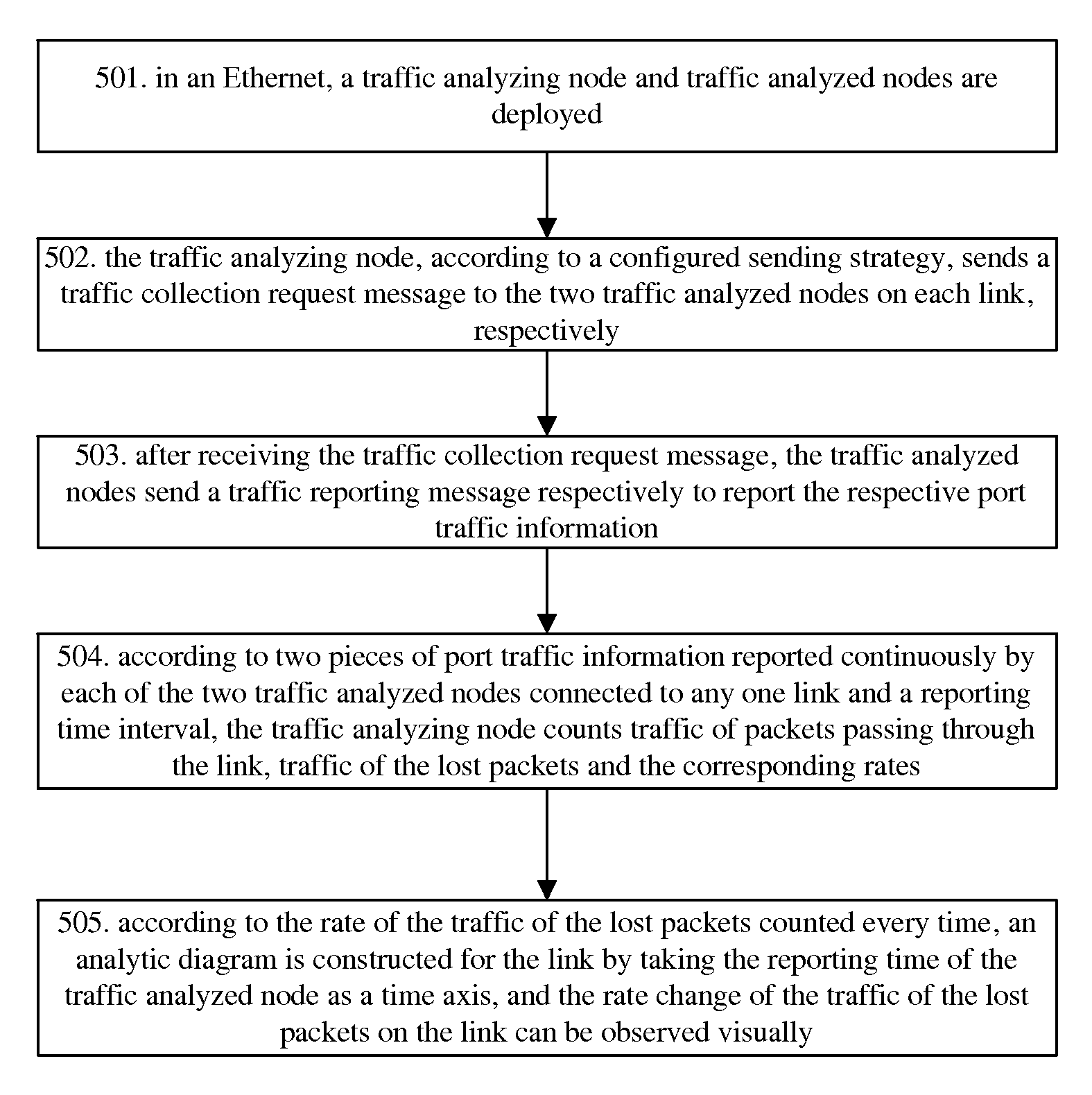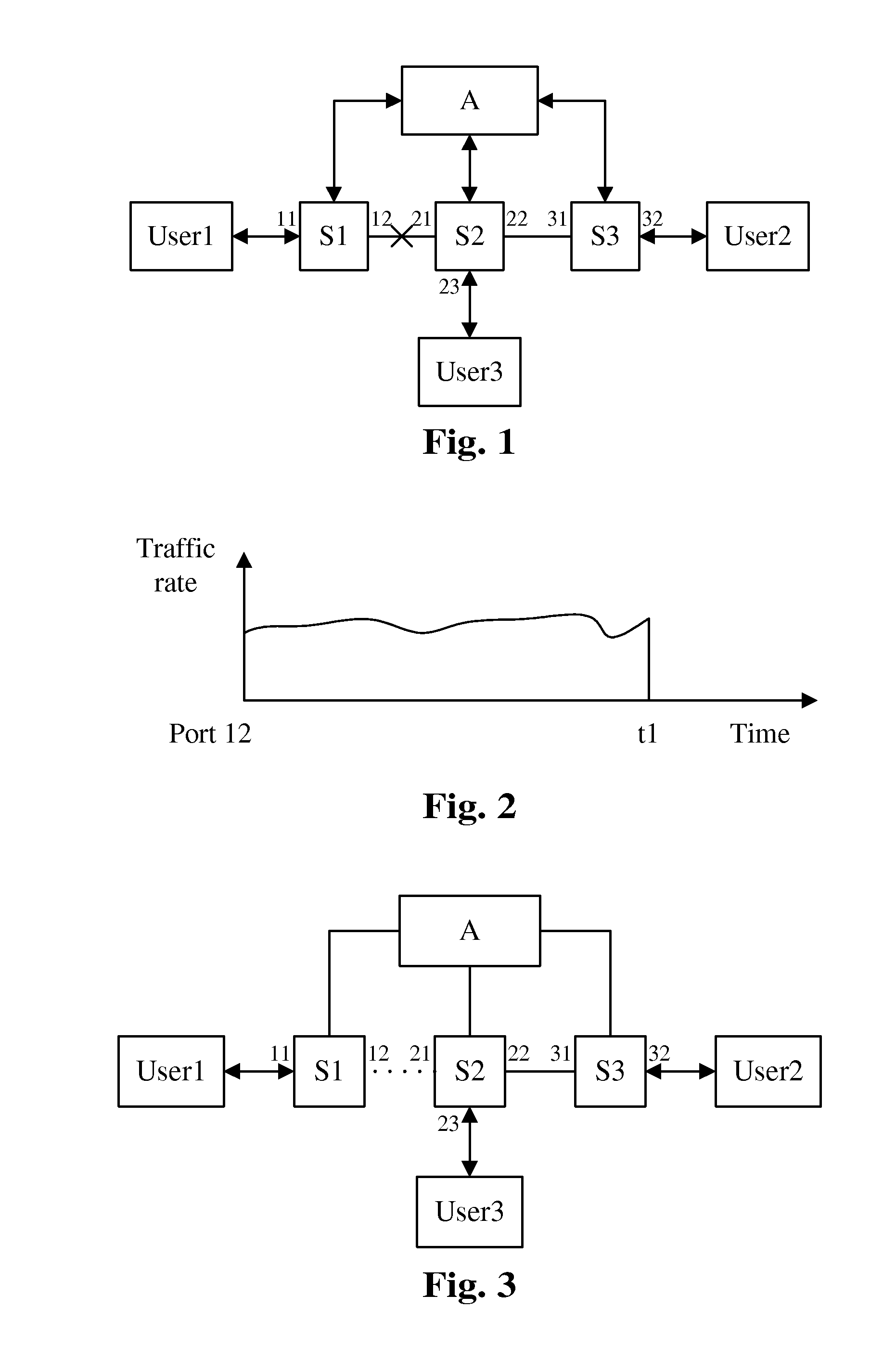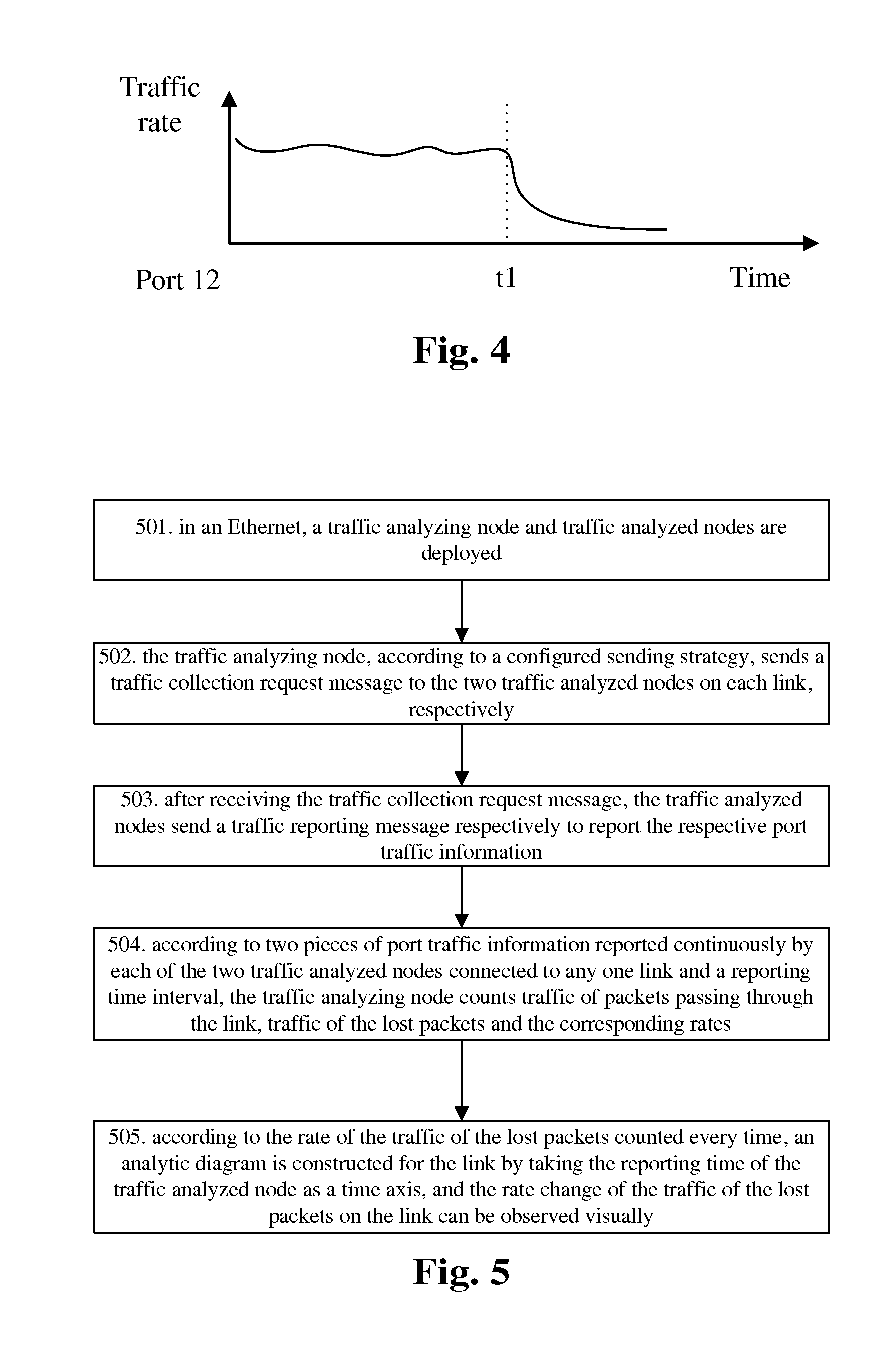Ethernet traffic statistics and analysis method and system
- Summary
- Abstract
- Description
- Claims
- Application Information
AI Technical Summary
Benefits of technology
Problems solved by technology
Method used
Image
Examples
embodiment 1
[0055]As shown in FIG. 3, a traffic analyzing node deployed in the Ethernet is Node A, and the traffic analyzed nodes are Node S1, Node S2 and Node S3. The method for realizing Ethernet traffic statistics and analysis in this embodiment is as shown in FIG. 7 and comprises the following steps.
[0056]Step 701: Node A respectively sends a traffic collection request message to Node S1, Node S2 and Node S3 on the links S1⇄S2 and S2⇄S3 according to a configured period T.
[0057]Step 702: after receiving the traffic collection request message, Node S1, Node S2 and Node S3 send a traffic reporting message respectively to report the respective port traffic information.
[0058]The port traffic information of Node S1 comprises counting information of the sent and received packets of Port 11 and Port 12 of Node S1. The port traffic information of Node S2 comprises counting information of the sent and received packets of Port 21 and Port 22 of Node S2. The port traffic information of Node S3 comprise...
embodiment 2
[0064]Taking FIG. 9 as an example, FIG. 9 shows an Ethernet ring network. The Ethernet ring network, which is an Ethernet protection technology, is a network of ring topology connected by several nodes. When all links on the ring are well-conditioned, a port on the ring of a node on the ring is blocked to prevent the ring from being closed, and the traffic has only one transmission channel on the network, for example, Port 11 is blocked by Node S1 and the traffic transmission path is S2⇄S3. When a fault occurs on a link on the ring, after the fault is detected by the adjacent nodes of the fault link, the port connected with the fault link is blocked and other nodes are notified to perform switching. The blocked port is opened when the link recovers. As shown in FIG. 10, a fault occurs between Node S2 and Node S3, Port 22 is blocked by Node S2, Port 31 is blocked by Node S3, other nodes are notified to perform switching and Port 11 is opened by Node S1.
[0065]In this network, Node A i...
PUM
 Login to View More
Login to View More Abstract
Description
Claims
Application Information
 Login to View More
Login to View More - R&D
- Intellectual Property
- Life Sciences
- Materials
- Tech Scout
- Unparalleled Data Quality
- Higher Quality Content
- 60% Fewer Hallucinations
Browse by: Latest US Patents, China's latest patents, Technical Efficacy Thesaurus, Application Domain, Technology Topic, Popular Technical Reports.
© 2025 PatSnap. All rights reserved.Legal|Privacy policy|Modern Slavery Act Transparency Statement|Sitemap|About US| Contact US: help@patsnap.com



